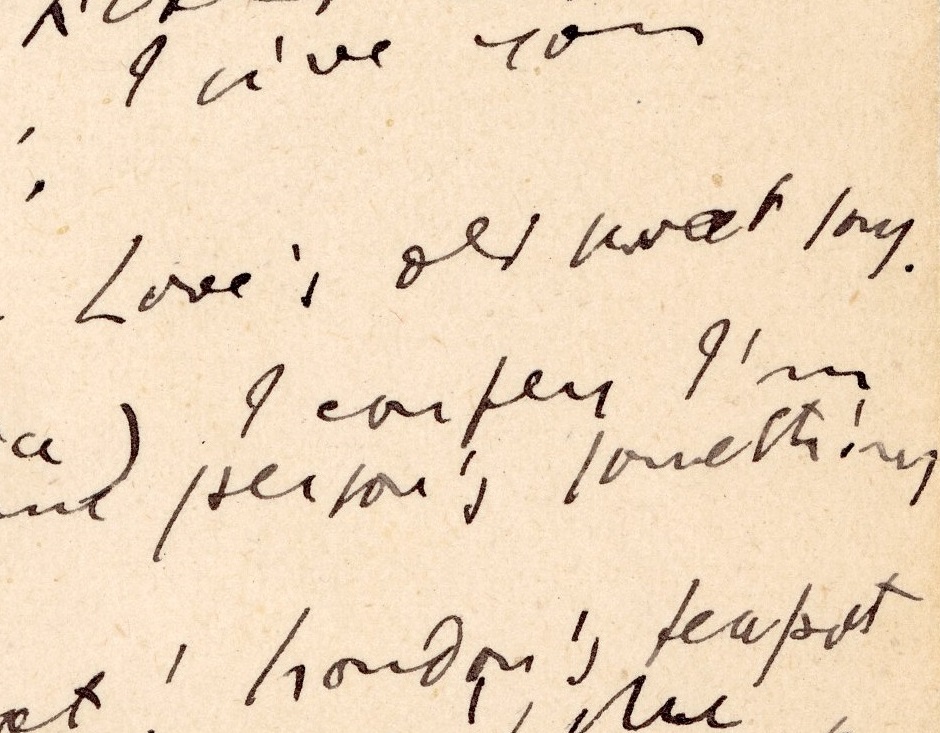The 2022 Rosenbacchanal (Thursday, May 12) will feature a unique harp and organ recital titled “The Muses’ Concord: Musical, Literary, and Historical Jewels from The Rosenbach’s Collection.” Each of the precious musical gems selected for performance at the event relates to one of The Rosenbach’s areas of collecting strengths. The program below presents the glittering array of musical pieces selected for performance, along with items from the collection to which the pieces connect.

If the organ is, in the words of Wolfgang Amadeus Mozart, “the king of instruments,” then the harp is surely his radiant queen.
The pipe organ astounds with the range and power of its tones, while the soothing quality of harp belies the robustness of its sound. While not a common pairing on the recital stage, the two instruments complement each other perfectly in tonight’s elegant domestic setting.
At The Rosenbach, the arts and humanities converge, just as harp and organ do this evening: in a serenade of splendor. This recital celebrates interdisciplinary experiences with a carefully curated set of musical pieces connected to objects in The Rosenbach collection. Enjoy this sonorous journey into The Rosenbach’s holdings of rare books, manuscripts, and artworks.
Part I: Medieval and Early-modern Beginnings
“The daily prayer of all true collectors should begin with the words, ‘beauty, rarity, condition,’ and last of all, ‘antiquity.’ But books differ from other antiques in that their ultimate value depends upon the intrinsic merit of the writer’s work. A first edition of Shakespeare, for instance, will always command an ever-increasing price. The same is true of first editions of Dante, Cervantes, or Goethe. These writers gave something to the world and to life—something of which one can always be sure.”
–Dr. A.S.W. Rosenbach, Books and Bidders, 1927
Alfonso X “El Sabio” (1221-1284), Rosa das Rosas – Cantiga. Organ and harp.
Arranged by Samuel Milligan, Vox Coelestis: Five Pieces for Harp…and Organ (Chicago: Lyon & Healy, 1991).
Collection connections:
EPISTOLAE CUM GLOSSIS, twelfth-century glossed copy of St. Paul’s Epistles, with the glossa ordinaria of Walahfrid Strabo and the glossa interlinearis of Anselm of Laon. Ink on parchment with occasional decorated initials. MS 484/13. https://bibliophilly.library.upenn.edu/viewer.php?id=MS%20484/13#page/1/mode/2up
DE REGIMINE PRINCIPUM, Spanish translation of a treatise on princely conduct, ca. 1500. MS 482/2. Ink on parchment with illuminated initials, and borders. https://bibliophilly.library.upenn.edu/viewer.php?id=MS%20482/2#page/1/mode/2up
Michael Praetorius (1571-1621), Spagnoletta. Organ and harp.
Arranged by Samuel Milligan, Vox Coelestis: Five Pieces for Harp…and Organ (Chicago: Lyon & Healy, 1991).
Collection connection: Rev. G.R. Woodward, Songs of Syon 4th edition (London: Schott and Company, 1923). Marianne Moore Collection. MML G2.02.
Jean-Baptiste Besard (1567-after 1618), Campanae Parisienses. Organ and harp.
Arranged by Samuel Milligan, Vox Coelestis: Five Pieces for Harp…and Organ (Chicago: Lyon & Healy, 1991).
Collection connection: The Rulers of France, 1380-1902: Holograph Letters and Documents. Vols. 1-2. MS f.233/22.
Jacob Arcadelt (attr.; ca. 1505 – ca. 1568), Ave Maria. Organ and harp.
Arranged by Samuel Milligan, Vox Coelestis: Five Pieces for Harp…and Organ (Chicago: Lyon & Healy, 1991).
Collection connection: Book of Hours of the Use of Paris, ca. 1480-1500. Latin and Middle French. MS 1057/29.
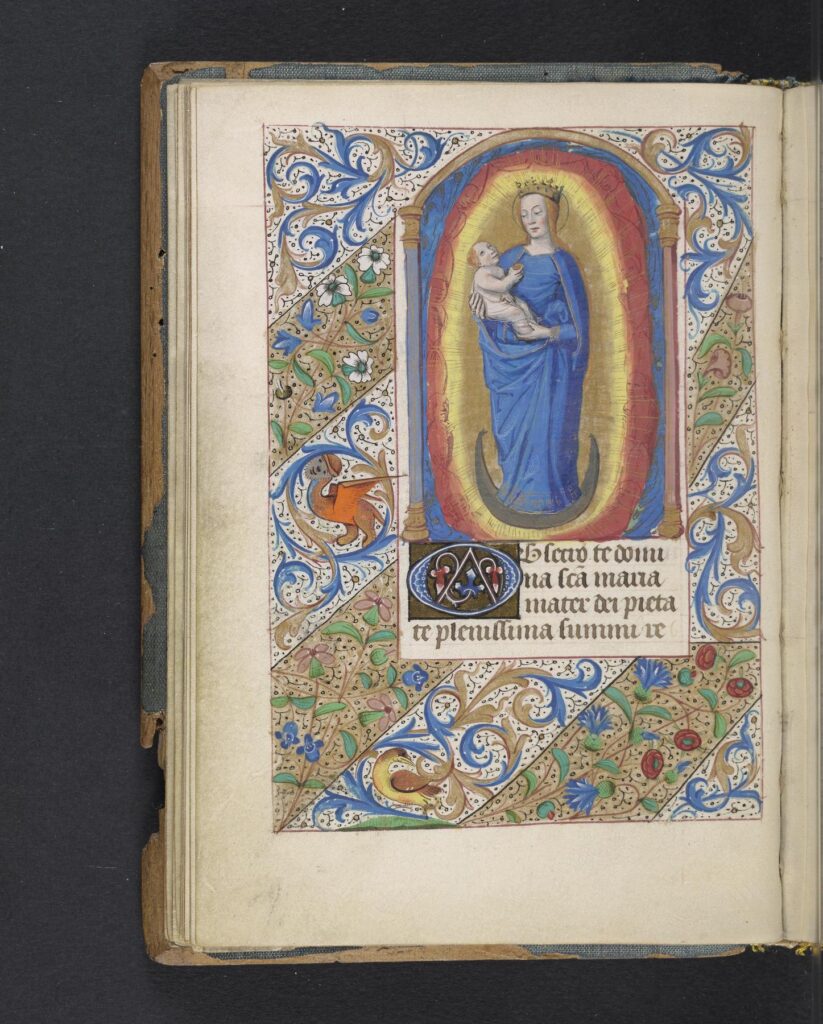
Part II: “A Commerce with the Muses”: (Not So) Famous Firsts in The Rosenbach’s Collection
“A Commerce with the Muses was supported amid the trivial and momentary interruptions of a shop; the Poets were studied, and even imitated with some success; — two pieces were constructed for the stage; — the Theory of Music was discussed, published, and dedicated to the Princess Royal; — and painting was so much within the circle of Ignatius Sancho’s judgement and criticism, that several artists paid great deference to his opinion.”
–Joseph Jekyll, “The Life of the Late Ignatius Sancho,” in The Letters of the Late Ignatius Sancho, an African, 1803
Schwester Föben (Christianna Lassle; 1711-1784), Formier mein Töpffer, mich aus.
Solo harp.
A hymn composed by one of the first known female composers in America.
Transcribed and arranged for harp by Dr. Christopher Dylan Herbert, with embellishments by Dr. Alexander Lawrence Ames.
Collections connection: Zionitischer Weyrauchs-Hügel of 1739, printed at the Ephrata community of Seventh-day Baptists
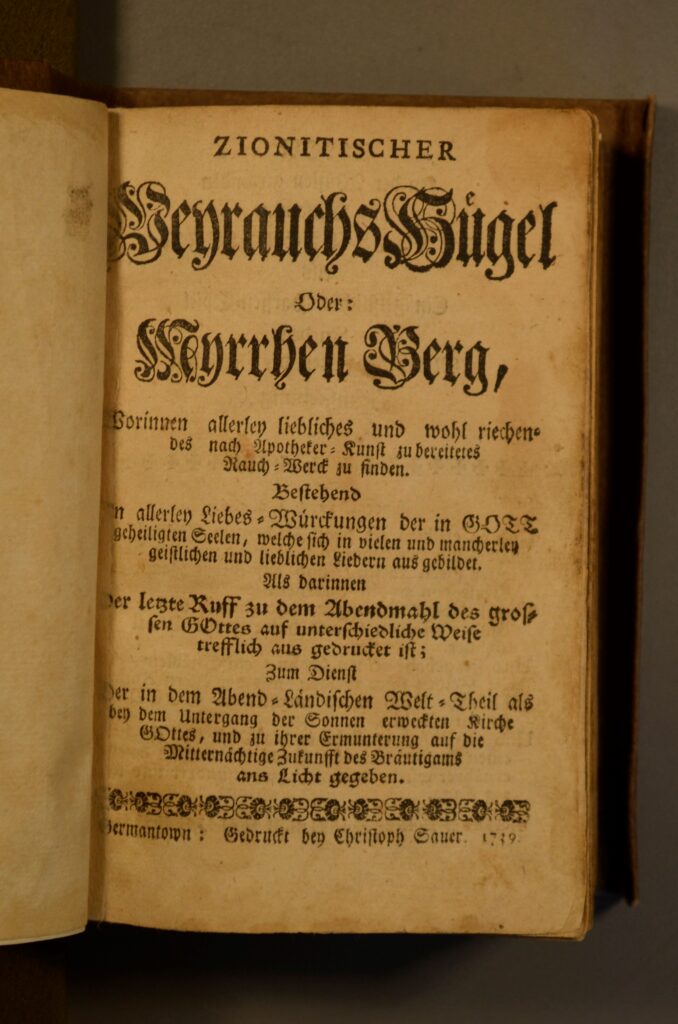
Ignatius Sancho, L’Homme et La Femme. Harp and organ.
A country dance by one of the first known published composers of African descent in Great Britain and first known person of African descent to vote in a British parliamentary election.
Published in Minuets Cotillons & Country Dances for the Violin, Mandolin, German Flute, & Harpsichord. Composed by an African. London: Printed for the author, 1775. Arranged for harp and organ by Dr. Alexander Lawrence Ames.
Collection connection: Ignatius Sancho (1729–1780), Letters of the Late Ignatius Sancho, An African, to which are Prefixed, Memoirs of his Life, by Joseph Jekyll, Esq. M.P. London: William Sancho, 1803. EL2 .S211l 803.
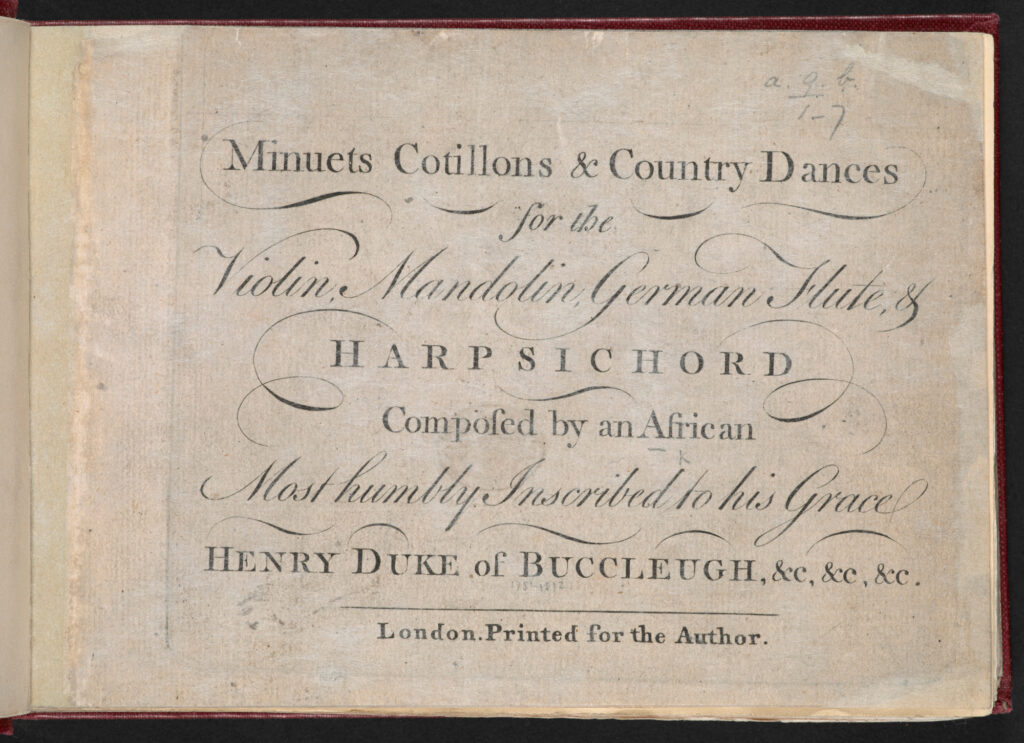
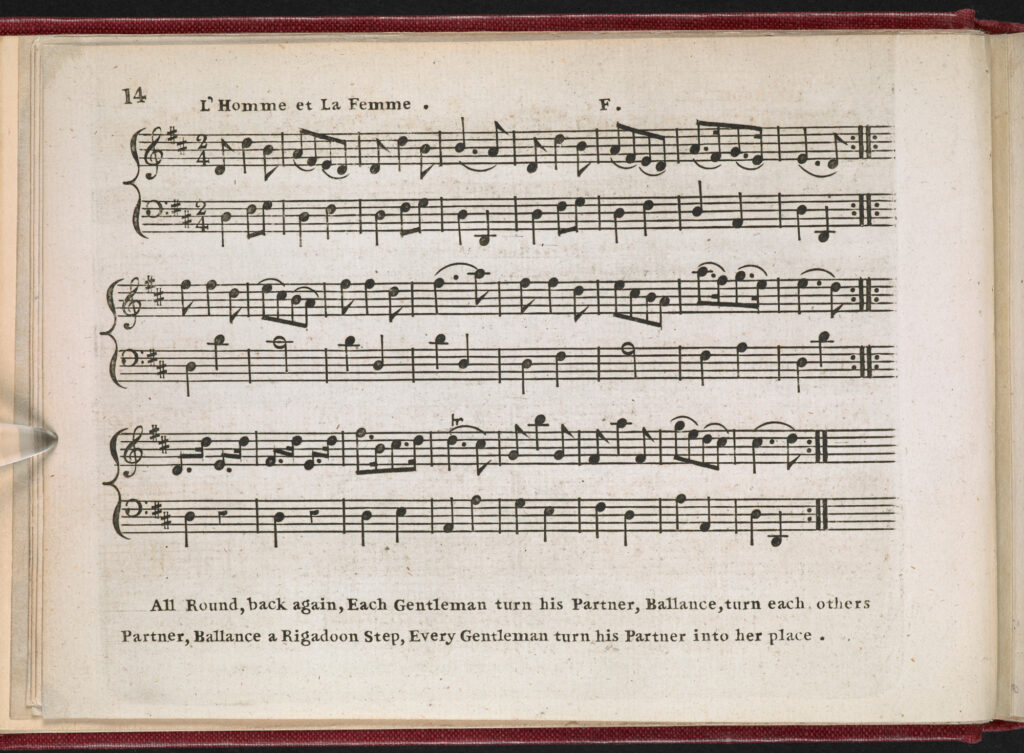
Part III: The Harp of the North: Sir Walter Scott, Robert Burns, and Celtic Traditions
“To speak in the poetical language of my country, the seat of the Celtic Muse is in the mist of the secret and solitary hill, and her voice in the murmur of the mountain stream. He who woos her must love the barren rock more than the fertile valley, and the solitude of the desert better than the festivity of the hall. … A few irregular strains introduced a prelude of a wild and peculiar tone, which harmonised well with the distant waterfall, and the soft sigh of the evening breeze in the rustling leaves of an aspen, which overhung the seat of the fair harpress.”
–Sir Walter Scott, Waverley; or, ‘Tis Sixty Years Since, 1814
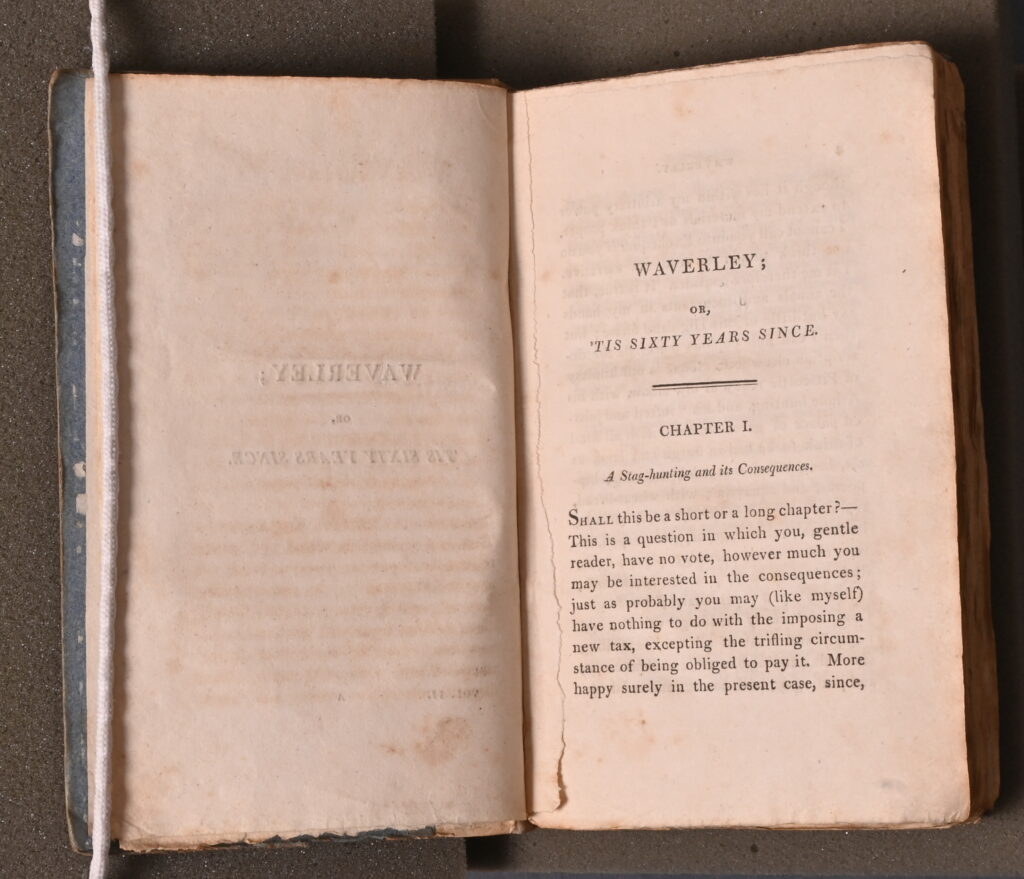
Robert Burns, “Bannockburn.” Solo harp.
Based on an arrangement in Sylvia Woods, 52 Scottish Songs for All Harps (Princeville, HI: Sylvia Woods Harp Center, 1997). Arranged by Dr. Alexander Lawrence Ames.
Collection connections: Robert Burns, presentation manuscript of Bannockburn.
Robert Burns, “My Heart’s in the Highlands” and “My Love is Like a Red, Red Rose.” Solo harp.
Based on arrangements in Sylvia Woods, 52 Scottish Songs for All Harps (Princeville, HI: Sylvia Woods Harp Cenber, 1997). Arranged by Dr. Alexander Lawrence Ames.
Collection connections: Robert Burns, Poems, Chiefly in the Scottish Dialect… Call no. EL2 .B967 793. Also, Marianne Moore holding a rose in a garden, Claremont, California, 1956. Moore XII:20:11a. XII:20:11a,b with envelope from Claremont postmarked Dec 20 1956.
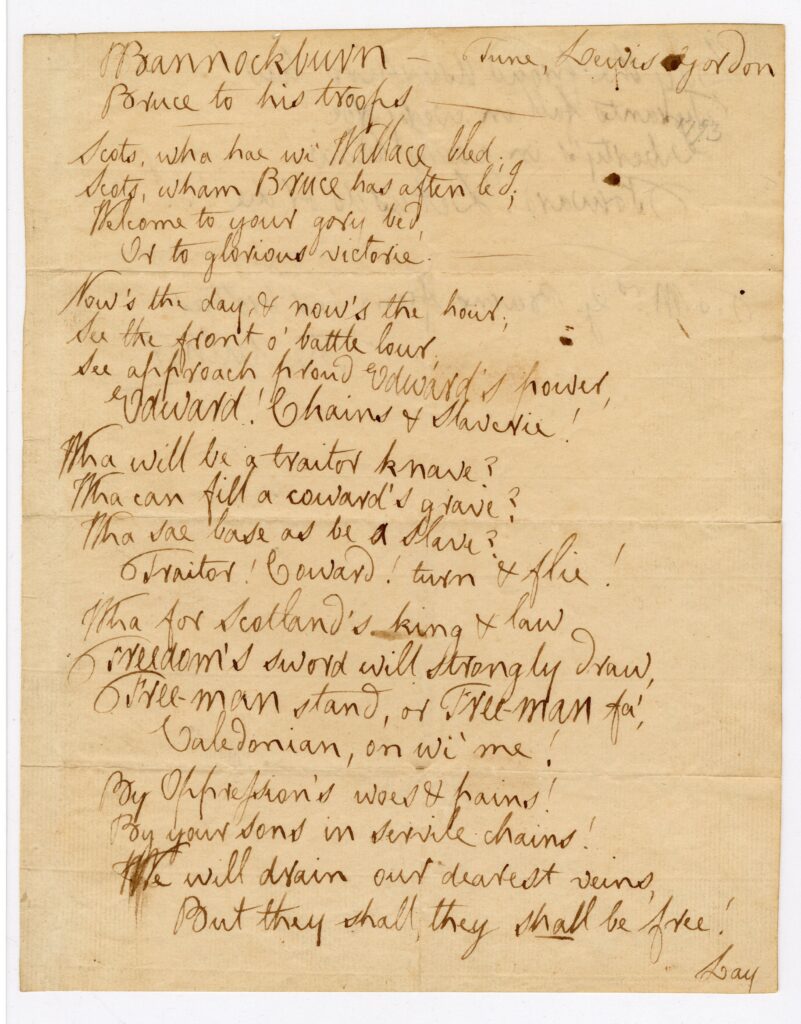
Part IV: Love’s Old Sweet Song: Music and James Joyce
“Yes, the newspapers were right: snow was general all over Ireland. It was falling on every part of the dark central plain, on the treeless hills, falling softly upon the Bog of Allen and, farther westward, softly falling into the dark mutinous Shannon waves. It was falling, too, upon every part of the lonely churchyard on the hill where Michael Furey lay buried. It lay thickly drifted on the crooked crosses and headstones, on the spears of the little gate, on the barren thorns. His soul swooned slowly as he heard the snow falling faintly through the universe and faintly falling, like the descent of their last end, upon all the living and the dead.”
–James Joyce, “The Dead,” Dubliners, 1914
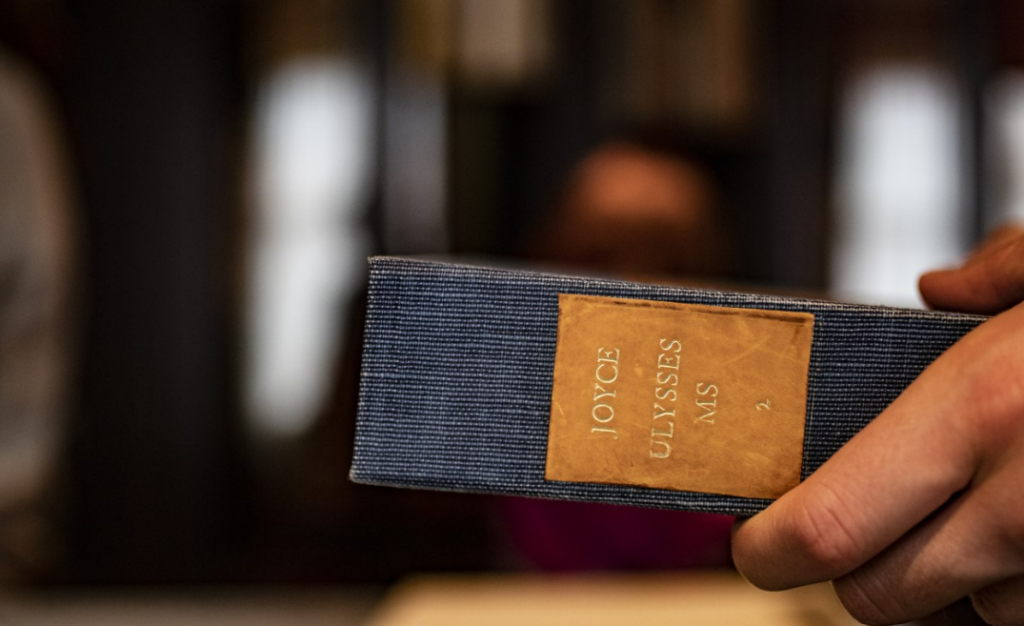
M.W. Balfe, “I Dreamt That I Dwelt in Marble Halls.” Solo harp.
Arranged for Celtic harp by Dr. Alexander Lawrence Ames.
Collection connection: Miguel de Cervantes’ Saavedra, Novelas Exemplares de Miguel de Cervantes Saavedra… (Madrid: Por Iuan de la Cuesta, 1613). Rosenbach call no. C2 .C419n, which inspired Balfe’s opera The Bohemian Girl. Also, the first edition of Dubliners by James Joyce with references to this song. James Joyce, Dubliners (London: Grant Richards, 1914). Rosenbach call no. EL4 .J89du 914.
Traditional Irish, “The Lass of Aughrim.” Solo harp.
Arranged for Celtic harp by Dr. Alexander Lawrence Ames.
Collection connection: First edition of Dubliners by James Joyce, including “The Dead” and its famous reference to this song. James Joyce, Dubliners (London: Grant Richards, 1914). Rosenbach call no. EL4 .J89du 914.
“Love’s Old Sweet Song.” Solo harp.
Arranged for Celtic harp by Dr. Alexander Lawrence Ames.
Collection connection: Manuscript of Ulysses by James Joyce, including numerous references and allusions to this popular parlor song. Rosenbach call no. EL4 J89ul 922 MS.
